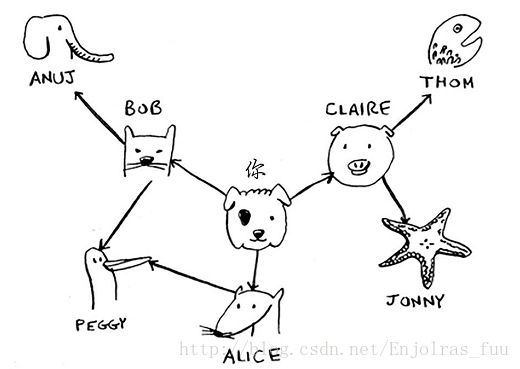- 编程助手学Python--Deepseek对提示词自定义模板StringPromptTemplate的理解
sunyaox
编程助手学Pythonpython开发语言
编程助手学Python--Deepseek对提示词自定义模板StringPromptTemplate的理解主要功能核心属性和方法使用场景示例代码1.基本用法2.使用f-string格式3.结合其他模板类高级用法1.自定义模板格式2.动态生成模板总结StringPromptTemplate是一种用于生成字符串提示的模板类,通常用于构建基于语言模型的应用程序。它允许你定义一个包含占位符的字符串模板,并
- Python-Celery-基础用法总结-安装-配置-启动
插件开发
Pythonpythonweb
文章目录1.安装Celery2.配置Celery3.启动Worker4.调用任务5.任务装饰器选项6.任务状态7.定期任务8.高级特性9.监控和管理Celery是一个基于分布式消息传递的异步任务队列。它专注于实时操作,但也支持调度。Celery可以与Django,Flask,Pyramid等Web框架集成,但也可以独立使用。1.安装Celery首先需要安装Celery和一个消息代理(如Rabbit
- Ubuntu上搭建虚拟环境
字节熊猫
ubuntulinux运维python
环境搭建1.安装pipaptinstallpython3-pip2.安装虚拟环境命令pip安装可能超时,可以使用一下国内镜像阿里云http://mirrors.aliyun.com/pypi/simple/中国科技大学https://pypi.mirrors.ustc.edu.cn/simple/豆瓣(douban)http://pypi.douban.com/simple/清华大学https:/
- 安装cpu版本的paddleocr
NO1212
python
1.CPU版的PaddlePaddlepython-mpipinstallpaddlepaddle==2.6.1-ihttps://mirror.baidu.com/pypi/simple2、验证安装安装完成后您可以使用python进入python解释器,输入importpaddle,再输入paddle.utils.run_check()如果出现PaddlePaddleisinstalledsuc
- 如何修复 VirtualBox 中缺少的依赖项 Python Core / win32api
mister-big
开发语言
本文将帮助您修复“缺少依赖项PythonCore/win32api”错误。最近,用户在安装OracleVMVirtualBox7.0以在Windows11或10上创建虚拟机时经常遇到问题。一、为什么VirtualBox需要PythonCore/win32api?简而言之,PythonCore/win32api专为Python程序而设计。它就像一组工具,让Python与Windows系统通信。您还可
- Python之项目课
稍微认真一点
python数据库开发语言
1.项目准备1.1.项目创建此处省略一万字...1.2.项目目标创建数据库movie并设置编码格式,并完成t_user(用户信息表)、t_movie(电影信息表)的创建任务;完成用户登录功能,登录成功之后跳转到电影主界面;完成电影排行榜和关键字电影查询功能;完成电影信息图表统计(选作)1.3.项目结构dao |--__init__.py |--movie_dao.py #电影dao层接口类 |
- Python的模块使用
稍微认真一点
python经验分享笔记
1.模块和包1.1.模块简而言之,在python中,一个文件(以“.py”为后缀名的文件)就叫做一个模块,每一个模块在python里都被看做是一个独立的文件。模块可以被项目中的其他模块、一些脚本甚至是交互式的解析器所使用,它可以被其他程序引用,从而使用该模块里的函数等功能,使用Python中的标准库也是采用这种方法。导入模块的三种方式:方式一:import模块名#导入整个demo模块importd
- Python的界面案例
稍微认真一点
python开发语言笔记经验分享
1.Tk图形用户界面(GUI)Tkinter是使用python进行窗口视窗设计的模块。Tkinter模块(“Tk接口”)是Python的标准TkGUI工具包的接口。作为python特定的GUI界面,是一个图像的窗口,tkinter是python自带的,可以编辑的GUI界面,用来入门,熟悉窗口视窗的使用,非常有必要。提供tk支持的模块包括:模块说明tkinterTK主模块tkinter.colorc
- 【python】网络编程socket TCP UDP
草莓泰面包
python网络pythontcp/ip
文章目录socket常用方法TCP客户端服务器UDP客户端服务器网络编程就是实现两台计算机的通信互联网协议族即通用标准协议,任何私有网络只要支持这个协议,就可以接入互联网。socketsocke模块的socket()函数importsocketsock=socket.socket(AddressFamily,type)参数说明:AddressFamily:指定套接字家族(AddressFamily
- python中打开麦克风
ai
python开发语言
在Python中打开麦克风,可以使用PyAudio库。首入PyAudio库。pipinstallPyAudio然后,使用以下代码打开麦克风:importpyaudiop=pyaudio.PyAudio()stream=p.open(format=pyaudio.paInt16,channels=1,rate=16000,input=True,frames_per_buffer=1024)其中,fo
- Python中用SpeechRecognition库和 vosk模型来识别语音
老菜鸟YDZ
菜鸟学pythonpython开发语言语音识别人工智能xcode
Python中的SpeechRecognition库是一个比较好用的语音识别模块,提供了将语音识别成文字的方法,支持中文识别。一、SpeechRecognition库的安装使用pip命令安装即可:pipinstallSpeechRecognition当安装不成功时,可以强制:pipinstall--force-SpeechRecognition二、SpeechRecognition库的导入:i
- python+wave+pyaudio:调用电脑麦克风进行声音录制
觅远
python音视频python开发语言ffmpeg
pyaudio:用于音频输入。wave:用于音频文件的读写。importwave,pyaudiop=pyaudio.PyAudio()#获取设备上的所有麦克风设备info=p.get_host_api_info_by_index(0)num_devices=info.get('deviceCount')foriinrange(0,num_devices):ifp.get_device_info_b
- C#实现AES-CBC加密工具类(含完整源码及使用教程)
WangMing_X
C#实现各种功能工具集c#AES-CBC加密
一、AES-CBC加密应用场景AES(AdvancedEncryptionStandard)作为全球公认的安全加密标准,广泛使用在以下场景:API通信加密:保护HTTP接口传输的敏感数据(如身份令牌、支付信息)文件安全存储:加密本地配置文件、数据库连接字符串等用户隐私保护:加密存储密码、身份证号等PII(个人身份信息)跨平台数据交换:与Java/Python等其他语言实现的加密系统互通物联网设备通
- Python真经:筑基开光篇
zzzzjflzdvkk
python开发语言
第一章:灵脉筑基Python真经乃跨三界之法,无论Windows、Linux、MacOSX,抑或云端秘境、移动外域,皆可开辟灵脉,筑基修炼。修士欲入此道,须先探查本命灵台是否已结Python丹种。可于终端秘境中掐诀念咒,输入「python」真言,若有金光浮现,则显其丹种品阶;若无回应,便是灵脉未开,需行筑基之法。第二章:天机阁取经灵脉之源修士当登临「天机阁」此乃Python真经本源之地。阁中藏有最
- 《Python实战进阶》No23: 使用 Selenium 自动化浏览器操作
带娃的IT创业者
Python实战进阶pythonselenium自动化
No23:使用Selenium自动化浏览器操作摘要Selenium是自动化浏览器操作的“瑞士军刀”,可模拟人类行为操作网页,适用于爬虫、测试、重复任务自动化等场景。本集通过代码驱动实战,从安装配置到复杂交互,带你掌握Selenium的核心技能,并结合电商网站登录、商品下单等真实场景,解决动态加载、反爬等实际问题。核心概念与代码实战1.环境配置与WebDriver基础安装命令:pipinstalls
- Python使用pycryptodome库来进行AES加密解密
飞起来fly呀
Pythonpython
在现代通信和数据存储中,加密技术是保障数据安全的核心手段。AES(AdvancedEncryptionStandard)是一种对称加密算法,广泛应用于各种信息安全领域。Python提供了丰富的加密库,其中PyCryptodome是一个功能强大且常用的库,它支持多种加密算法和模式。以下指南将详细介绍如何在Python中使用PyCryptodome库进行AES加密和解密。一、安装PyCryptodom
- janeczku / calibre-web忘记密码 命令行重置密码
慌雨
前端linux运维
根据博客https://blog.csdn.net/gaoxiangfei/article/details/137070897但一直报错:Passworddoesn’tcomplywithpasswordvalidationrules进入容器:dockerexec-itcontainer_id/bin/bash直到我尝试这样的方式:root@782e4226f457:/#python3/app/c
- Python二级考试试题汇总(史上最全)
m0_67265464
面试学习路线阿里巴巴前端intellij-idea经验分享
Python二级考试试题(一)以下关于程序设计语言的描述,错误的选项是:APython语言是一种脚本编程语言B汇编语言是直接操作计算机硬件的编程语言C程序设计语言经历了机器语言、汇编语言、脚本语言三个阶段D编译和解释的区别是一次性翻译程序还是每次执行时都要翻译程序正确答案:C表达式1001==0x3e7的结果是:AfalseBFalseCtrueDTrue正确答案:B以下选项,不是Python保留
- ModuleNotFoundError: No module named ‘Crypto‘
小武小武每天练武
python开发语言
看到这个错误提示“ModuleNotFoundError:Nomodulenamed‘Crypto’”,说明Python环境中缺少Crypto模块。这通常发生在pycryptodome库没有正确安装的情况下。解决步骤1.安装pycryptodome确保你安装了pycryptodome库,这是包含Crypto模块的库。使用以下命令来安装:pipinstallpycryptodome2.检查Pytho
- Python, Java 开发全国苦难人群诉苦平台APP
Geeker-2025
pythonjava
开发一个“全国苦难人群诉苦平台APP”是一个非常有社会意义的项目,旨在为需要帮助的人群提供一个表达困难、寻求支持和解决方案的平台。这种APP可以帮助政府、公益组织和社会各界更好地了解和解决社会问题,同时为苦难人群提供心理支持和实际帮助。以下是一个高层次的开发思路,以及如何用**Python**和**Java**实现相关功能的示例。---###**1.功能需求分析**一个“全国苦难人群诉苦平台APP
- 【蓝桥杯集训·每日一题2025】 AcWing 4905. 面包店 python
查理零世
蓝桥杯2025每日一题蓝桥杯算法python
AcWing4905.面包店Week43月14日题目描述贝茜开了一家面包店。贝茜的面包店中只有一个烤箱,该烤箱制作一块饼干需要花费的时间为tCt_CtC,制作一块松饼需要花费的时间为tMt_MtM。烤箱每次只能制作一个糕点,也就是说制作AAA块饼干和BBB块松饼需要花费的时间为A×tC+B×tMA\timest_C+B\timest_MA×tC+B×tM。有NNN个客人来光顾贝茜的生意,编号1∼N
- 吴恩达出手,开源最新Python包,一个接口调用OpenAI等模型
Bryan Ding
python
用相同的代码方式调用OpenAI、Anthropic、Google等发布的大模型,还能实现便捷的模型切换和对比测试。刚刚,AI著名学者、斯坦福大学教授吴恩达最新开源项目实现了。吴恩达在推文中宣布了这一好消息开源新的Python包:aisuite!这个工具可以让开发者轻松使用来自多个提供商的大型语言模型。在谈到为何构建这个项目时,吴恩达表示构建应用时,发现与多个提供商集成非常麻烦。aisuite正是
- 项目报错 SyntaxError: Unexpected token ‘??=‘ 和node-sass报python错误;nuxt、vue项目
院人冲冲冲
前端javascript开发语言
前提:node14.21.3项目报错SyntaxError:Unexpectedtoken'??='1.仔细看错误代码位置,发现是在node_modules文件中(找来源)2.node_modules文件报错Unexpectedtoken'??='15:59:58constlist=obj[list]??=[];^^^SyntaxError:Unexpectedtoken'??='atnewScr
- python的reload
风语者666
pythonjavalinux
先看看from...import...的问题#importparse_tumor_report.parse_tumor_report#这样是错的fromparse_tumor_reportimportparse_tumor_report#这个是正确用法再看reload的问题parse_report是我自定义的一个模块文件。该文件(模块)中包含了一个parse_tumor_report类。这样是没错
- Python中三种表示NA的方式
风语者666
python
Python中三种表示NA的方式#-*-coding:utf-8-*-importnumpyasnpimportpandasaspd#data_frame=np.load('a.npy',allow_pickle=True)#print(data_frame.columns)df=pd.DataFrame({'one':[1,2,3,pd.NA]})df=pd.DataFrame({'one':[
- Python API接口
君王的羔羊
PythonAIpython
人工智能机器人EverydayWechat老李API图灵机器人:http://www.turingapi.com/(需求实名制认证,并每天免费数量只有100条)青云客智能聊天机器人:http://api.qingyunke.com/(无须申请,无数量限制,但有点智障,分手神器。分手神器,慎用)智能闲聊(腾讯):https://ai.qq.com/product/nlpchat.shtml(申请使用
- 梯度下降法以及随机梯度下降法
HKkuaidou
人工智能深度学习pythonpytorch
梯度下降法就是在更新weight的时候,向函数值下降的最快方向进行更新,具体的原理我就不再写了,就是一个求偏导的过程,有高数基础的都能够很快的理解过程。我在我的github里面会一直更新自己学习pytorch的过程,地址为:https://github.com/00paning/Pytorch_Learning这里我直接展示一个简易实现的python代码,我们还是先看一下运行的效果图:相关pyth
- Python 实现的采集诸葛灵签
老大白菜
pythonpython开发语言
Python实现的采集诸葛灵签项目介绍这是一个基于Python开发的诸葛灵签数据采集和展示项目。通过爬虫技术获取诸葛神签的签文和解签内容,并提供数据存储和查询功能。项目结构zhuge/├──zhuge_scraper.py#爬虫主程序├──zhuge_pages/#数据存储目录│├──all_signs.json#汇总数据│└──zhuge_sign_*.json#单个签文数据└──zhuge.m
- Python爬虫实战:从青铜到王者的数据采集进化论
Loving_enjoy
实用技巧爬虫python
#开篇:当你打开浏览器时,爬虫程序在暗处露出了姨母笑某日凌晨3点,程序员老张盯着满屏的404错误,突然领悟了爬虫的真谛——这哪里是数据采集,分明是与网站运维人员斗智斗勇的谍战游戏!本文将带你体验从"HelloWorld"式爬虫到工业级采集系统的奇幻漂流,全程高能预警,请系好安全带。---###第一章青铜时代:初学者的三板斧####1.1环境搭建:你的第一把手术刀安装Python就像选择武器库:``
- python常用的第三方库下载方法
ZJ_star_1220
pycharmidepython
方法一:在windows系统中使用pip命令下载打开dos窗口输入命令“pipinstallselenium“后按回车键,看到successfully既安装成功。其他常用的命令:【pipinstallselenium==4.4.3】安装指定版本的库/包【pipinstallselenium】安装最新版本的库/包【pipshowselenium】查看库/包的安装路径、版本号【pipuninstall
- ASM系列四 利用Method 组件动态注入方法逻辑
lijingyao8206
字节码技术jvmAOP动态代理ASM
这篇继续结合例子来深入了解下Method组件动态变更方法字节码的实现。通过前面一篇,知道ClassVisitor 的visitMethod()方法可以返回一个MethodVisitor的实例。那么我们也基本可以知道,同ClassVisitor改变类成员一样,MethodVIsistor如果需要改变方法成员,注入逻辑,也可以
- java编程思想 --内部类
百合不是茶
java内部类匿名内部类
内部类;了解外部类 并能与之通信 内部类写出来的代码更加整洁与优雅
1,内部类的创建 内部类是创建在类中的
package com.wj.InsideClass;
/*
* 内部类的创建
*/
public class CreateInsideClass {
public CreateInsideClass(
- web.xml报错
crabdave
web.xml
web.xml报错
The content of element type "web-app" must match "(icon?,display-
name?,description?,distributable?,context-param*,filter*,filter-mapping*,listener*,servlet*,s
- 泛型类的自定义
麦田的设计者
javaandroid泛型
为什么要定义泛型类,当类中要操作的引用数据类型不确定的时候。
采用泛型类,完成扩展。
例如有一个学生类
Student{
Student(){
System.out.println("I'm a student.....");
}
}
有一个老师类
- CSS清除浮动的4中方法
IT独行者
JavaScriptUIcss
清除浮动这个问题,做前端的应该再熟悉不过了,咱是个新人,所以还是记个笔记,做个积累,努力学习向大神靠近。CSS清除浮动的方法网上一搜,大概有N多种,用过几种,说下个人感受。
1、结尾处加空div标签 clear:both 1 2 3 4
.div
1
{
background
:
#000080
;
border
:
1px
s
- Cygwin使用windows的jdk 配置方法
_wy_
jdkwindowscygwin
1.[vim /etc/profile]
JAVA_HOME="/cgydrive/d/Java/jdk1.6.0_43" (windows下jdk路径为D:\Java\jdk1.6.0_43)
PATH="$JAVA_HOME/bin:${PATH}"
CLAS
- linux下安装maven
无量
mavenlinux安装
Linux下安装maven(转) 1.首先到Maven官网
下载安装文件,目前最新版本为3.0.3,下载文件为
apache-maven-3.0.3-bin.tar.gz,下载可以使用wget命令;
2.进入下载文件夹,找到下载的文件,运行如下命令解压
tar -xvf apache-maven-2.2.1-bin.tar.gz
解压后的文件夹
- tomcat的https 配置,syslog-ng配置
aichenglong
tomcathttp跳转到httpssyslong-ng配置syslog配置
1) tomcat配置https,以及http自动跳转到https的配置
1)TOMCAT_HOME目录下生成密钥(keytool是jdk中的命令)
keytool -genkey -alias tomcat -keyalg RSA -keypass changeit -storepass changeit
- 关于领号活动总结
alafqq
活动
关于某彩票活动的总结
具体需求,每个用户进活动页面,领取一个号码,1000中的一个;
活动要求
1,随机性,一定要有随机性;
2,最少中奖概率,如果注数为3200注,则最多中4注
3,效率问题,(不能每个人来都产生一个随机数,这样效率不高);
4,支持断电(仍然从下一个开始),重启服务;(存数据库有点大材小用,因此不能存放在数据库)
解决方案
1,事先产生随机数1000个,并打
- java数据结构 冒泡排序的遍历与排序
百合不是茶
java
java的冒泡排序是一种简单的排序规则
冒泡排序的原理:
比较两个相邻的数,首先将最大的排在第一个,第二次比较第二个 ,此后一样;
针对所有的元素重复以上的步骤,除了最后一个
例题;将int array[]
- JS检查输入框输入的是否是数字的一种校验方法
bijian1013
js
如下是JS检查输入框输入的是否是数字的一种校验方法:
<form method=post target="_blank">
数字:<input type="text" name=num onkeypress="checkNum(this.form)"><br>
</form>
- Test注解的两个属性:expected和timeout
bijian1013
javaJUnitexpectedtimeout
JUnit4:Test文档中的解释:
The Test annotation supports two optional parameters.
The first, expected, declares that a test method should throw an exception.
If it doesn't throw an exception or if it
- [Gson二]继承关系的POJO的反序列化
bit1129
POJO
父类
package inheritance.test2;
import java.util.Map;
public class Model {
private String field1;
private String field2;
private Map<String, String> infoMap
- 【Spark八十四】Spark零碎知识点记录
bit1129
spark
1. ShuffleMapTask的shuffle数据在什么地方记录到MapOutputTracker中的
ShuffleMapTask的runTask方法负责写数据到shuffle map文件中。当任务执行完成成功,DAGScheduler会收到通知,在DAGScheduler的handleTaskCompletion方法中完成记录到MapOutputTracker中
- WAS各种脚本作用大全
ronin47
WAS 脚本
http://www.ibm.com/developerworks/cn/websphere/library/samples/SampleScripts.html
无意中,在WAS官网上发现的各种脚本作用,感觉很有作用,先与各位分享一下
获取下载
这些示例 jacl 和 Jython 脚本可用于在 WebSphere Application Server 的不同版本中自
- java-12.求 1+2+3+..n不能使用乘除法、 for 、 while 、 if 、 else 、 switch 、 case 等关键字以及条件判断语句
bylijinnan
switch
借鉴网上的思路,用java实现:
public class NoIfWhile {
/**
* @param args
*
* find x=1+2+3+....n
*/
public static void main(String[] args) {
int n=10;
int re=find(n);
System.o
- Netty源码学习-ObjectEncoder和ObjectDecoder
bylijinnan
javanetty
Netty中传递对象的思路很直观:
Netty中数据的传递是基于ChannelBuffer(也就是byte[]);
那把对象序列化为字节流,就可以在Netty中传递对象了
相应的从ChannelBuffer恢复对象,就是反序列化的过程
Netty已经封装好ObjectEncoder和ObjectDecoder
先看ObjectEncoder
ObjectEncoder是往外发送
- spring 定时任务中cronExpression表达式含义
chicony
cronExpression
一个cron表达式有6个必选的元素和一个可选的元素,各个元素之间是以空格分隔的,从左至右,这些元素的含义如下表所示:
代表含义 是否必须 允许的取值范围 &nb
- Nutz配置Jndi
ctrain
JNDI
1、使用JNDI获取指定资源:
var ioc = {
dao : {
type :"org.nutz.dao.impl.NutDao",
args : [ {jndi :"jdbc/dataSource"} ]
}
}
以上方法,仅需要在容器中配置好数据源,注入到NutDao即可.
- 解决 /bin/sh^M: bad interpreter: No such file or directory
daizj
shell
在Linux中执行.sh脚本,异常/bin/sh^M: bad interpreter: No such file or directory。
分析:这是不同系统编码格式引起的:在windows系统中编辑的.sh文件可能有不可见字符,所以在Linux系统下执行会报以上异常信息。
解决:
1)在windows下转换:
利用一些编辑器如UltraEdit或EditPlus等工具
- [转]for 循环为何可恨?
dcj3sjt126com
程序员读书
Java的闭包(Closure)特征最近成为了一个热门话题。 一些精英正在起草一份议案,要在Java将来的版本中加入闭包特征。 然而,提议中的闭包语法以及语言上的这种扩充受到了众多Java程序员的猛烈抨击。
不久前,出版过数十本编程书籍的大作家Elliotte Rusty Harold发表了对Java中闭包的价值的质疑。 尤其是他问道“for 循环为何可恨?”[http://ju
- Android实用小技巧
dcj3sjt126com
android
1、去掉所有Activity界面的标题栏
修改AndroidManifest.xml 在application 标签中添加android:theme="@android:style/Theme.NoTitleBar"
2、去掉所有Activity界面的TitleBar 和StatusBar
修改AndroidManifes
- Oracle 复习笔记之序列
eksliang
Oracle 序列sequenceOracle sequence
转载请出自出处:http://eksliang.iteye.com/blog/2098859
1.序列的作用
序列是用于生成唯一、连续序号的对象
一般用序列来充当数据库表的主键值
2.创建序列语法如下:
create sequence s_emp
start with 1 --开始值
increment by 1 --増长值
maxval
- 有“品”的程序员
gongmeitao
工作
完美程序员的10种品质
完美程序员的每种品质都有一个范围,这个范围取决于具体的问题和背景。没有能解决所有问题的
完美程序员(至少在我们这个星球上),并且对于特定问题,完美程序员应该具有以下品质:
1. 才智非凡- 能够理解问题、能够用清晰可读的代码翻译并表达想法、善于分析并且逻辑思维能力强
(范围:用简单方式解决复杂问题)
- 使用KeleyiSQLHelper类进行分页查询
hvt
sql.netC#asp.nethovertree
本文适用于sql server单主键表或者视图进行分页查询,支持多字段排序。KeleyiSQLHelper类的最新代码请到http://hovertree.codeplex.com/SourceControl/latest下载整个解决方案源代码查看。或者直接在线查看类的代码:http://hovertree.codeplex.com/SourceControl/latest#HoverTree.D
- SVG 教程 (三)圆形,椭圆,直线
天梯梦
svg
SVG <circle> SVG 圆形 - <circle>
<circle> 标签可用来创建一个圆:
下面是SVG代码:
<svg xmlns="http://www.w3.org/2000/svg" version="1.1">
<circle cx="100" c
- 链表栈
luyulong
java数据结构
public class Node {
private Object object;
private Node next;
public Node() {
this.next = null;
this.object = null;
}
public Object getObject() {
return object;
}
public
- 基础数据结构和算法十:2-3 search tree
sunwinner
Algorithm2-3 search tree
Binary search tree works well for a wide variety of applications, but they have poor worst-case performance. Now we introduce a type of binary search tree where costs are guaranteed to be loga
- spring配置定时任务
stunizhengjia
springtimer
最近因工作的需要,用到了spring的定时任务的功能,觉得spring还是很智能化的,只需要配置一下配置文件就可以了,在此记录一下,以便以后用到:
//------------------------定时任务调用的方法------------------------------
/**
* 存储过程定时器
*/
publi
- ITeye 8月技术图书有奖试读获奖名单公布
ITeye管理员
活动
ITeye携手博文视点举办的8月技术图书有奖试读活动已圆满结束,非常感谢广大用户对本次活动的关注与参与。
8月试读活动回顾:
http://webmaster.iteye.com/blog/2102830
本次技术图书试读活动的优秀奖获奖名单及相应作品如下(优秀文章有很多,但名额有限,没获奖并不代表不优秀):
《跨终端Web》
gleams:http
